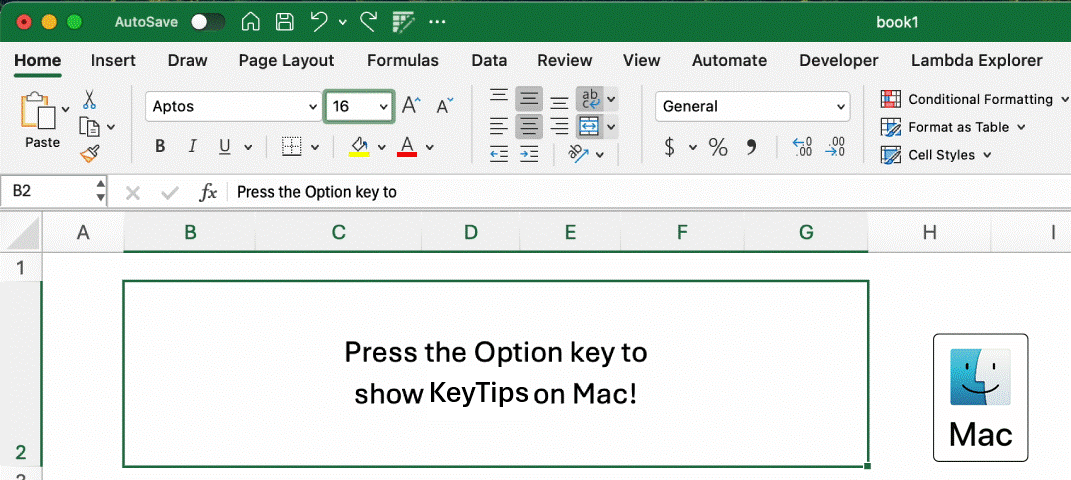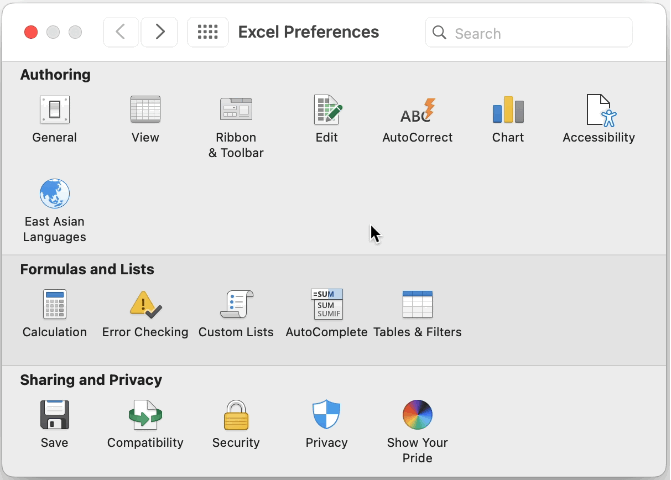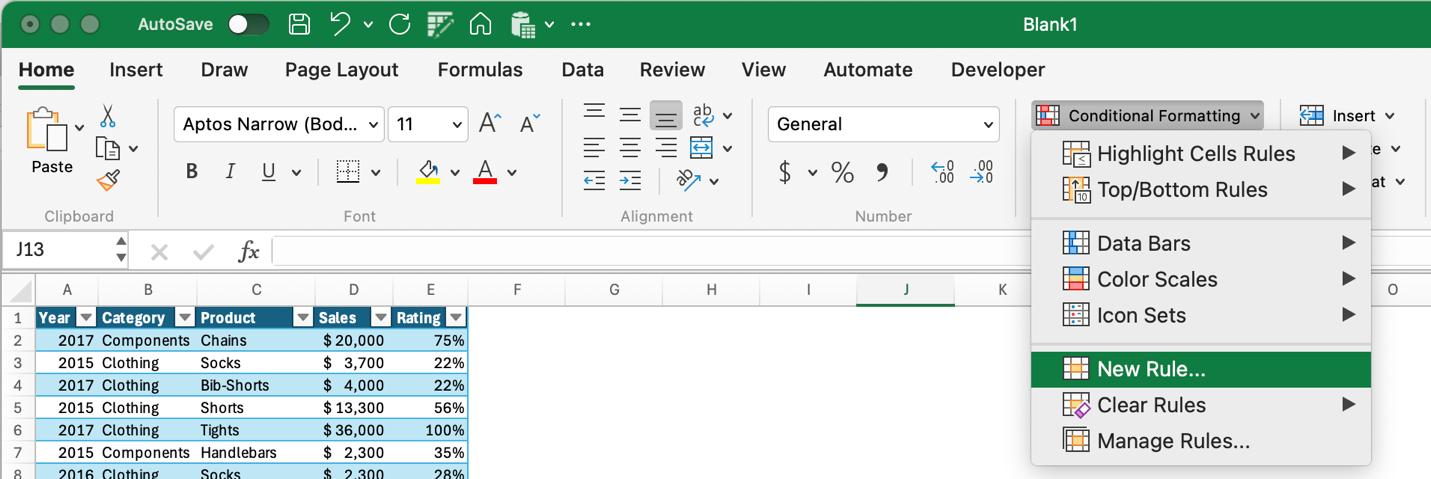Excel for Mac: KeyTips now available on Mac!
8 November 2024
This week in our series about Microsoft Excel for Mac, we have an update about a great new feature that’s been around for many years in Windows – KeyTips!

Ribbon keyboard shortcuts
For a long time, Excel and the other Microsoft applications have made it easy to use the keyboard to get to tabs and commands on the Ribbon by pressing the ALT key. ToolTips, known as KeyTips, appear indicating other keys to press so that you may navigate the Ribbon or press a button. For example, you can press ALT + H + F + S to get to the font size. This was never available on Mac until mid-2024, first in beta, and then rolling out to everyone.
How to get KeyTips on Mac
The first thing to do is press and release the Option key. You may see the KeyTips appear in your Ribbon and you can simply press the key or keys indicated to navigate the Ribbon or press a button.
If you don’t see KeyTips after pressing the Option key, you can enable the feature by going to your Excel preferences. Perform the following:
- Press CMD + Comma to open the Excel preferences
- Go to Accessibility
- In the drop-down menu for KeyTips activation keystroke, change from ‘Disabled’ to one of the other options. You can choose either Option (⌥) or SHIFT + Option (Ý⌥) as the activation key for KeyTips.

- Close the Preference panel and try it!
Tips about KeyTips
- To dismiss the KeyTips, press the Esc key or press the activation key again
- To navigate the Ribbon or press a button, just press the key or keys indicated in the KeyTip for the place you want to go or the button you want to press. Easy!
- To work with dropdowns that open after using KeyTips, use your arrow keys to make a selection and press RETURN to activate the selected item. For example, to get to the Conditional Formatting menu, you can press Option + H + L and then you can use your arrow keys and RETURN to activate an item from the menu as shown below. Press and release Option:

Press ‘L’ to open the ‘Conditional Formatting’ drop-down menu.

Press the down arrow key to select an item in the menu, and RETURN to activate it.

What’s different from Windows?
If you’re familiar with using KeyTips on Windows, then there are some minor differences to be aware of:
- On Windows, you can sometimes press the ALT key and one of the letters at the same time to activate a Ribbon tab. On Mac, this will type a symbol. For example, pressing Option + P types ‘π'.
- On Windows, you can use the Esc key to go back one step in the key sequence that you pressed. For example, you can press ALT + H + L then press Esc to go back to the state it was before you pressed L. On Mac, pressing Esc always cancels all the keys that you’ve pressed, so you can start over again.
- Some key sequences used for certain commands may not match exactly. Some differences may have a good reason, but others might not make sense. For example, there’s no File tab on Mac, so naturally the KeyTip that works on Windows won’t work on Mac. If there are differences that you notice which don’t seem to make sense, you can send feedback to Microsoft to let them know about it, and maybe they’ll fix it. Just click the feedback button to do that.
- Some items in the title bar of your window aren’t accessible via KeyTips as they are on Windows. For example, on Windows you can press ALT + Q to go to the search field. This won’t work on Mac, but you can use the shortcut CMD + CTRL + U to get there.
Tip
Helpful hint: if you open a side pane using KeyTips, you can also close it using KeyTips. For example, you can press Option + R + G to open the ‘Show Changes’ pane, you can press Option + R + G again to close it.
We hope you found this topic helpful. Check back for more details about Excel for Mac and how it’s different from Excel for Windows.

